Editor's note: in July 2021 it was announced that head chef Jan Hartwig would be leaving to pursue his own project.
Atelier is in the luxurious Bayerisch Hof Hotel, which dates back to 1841. The restaurant opened in May 2014 and entered the Michelin guide with one star in the 2015 guide, was promoted the following year to two and, just two years later, in the 2018 guide, it was awarded the ultimate third star. Head chef Jan Hartwig trained at two star Kastell in Wernberg-Koblitz, then worked for a year at Gastehaus Erfort before moving to Aqua, where he became sous-chef in 2009, prior to his move to Munich in 2014.
The restaurant itself is a little tricky to find within the labyrinthine hotel, despite Atelier having a seemingly dedicated entrance from the street, which is to the right of the main hotel entrance as you approach the Bayerischer Hof. When you go through the entrance marked “Atelier” you see a few shops on either side of you, and then ahead is a corridor with a sign for another restaurant within the hotel called Trader Vic ahead of you. You ignore this and head further down a dark corridor to the end, where on the right is a restaurant with tables set out in a conservatory. This is not it either. Instead, behind an unmarked door to the left of the conservatory is the dining room of Atelier. Once you have found the place then you can reward yourself with a congratulatory drink.
The dining room is fairly unprepossessing, with a low ceiling, a wooden floor and well-spaced tables with white tablecloths. There was a five course tasting menu at €175 (£155) and a seven course version at €220 (£194). The wine list was quite extensive, and had labels such as at Burklin-Wolf Deidesheim Riesling Qba 2016 at €54 for a bottle that you can find in the high street for €19, Saxenburg Estate Shiraz Private Collection 2015 at €70 compared to its retail price of €22, and Weingut Emerich Knoll Ried Schutt Riesling Smaragd 2013 at €110 for a wine that will set you back €52 in the shops. For those with the means, there were grander offerings such as Etienne Sauzet Champ Canet Puligny Montrachet 2012 at €340 compared to its retail price of €146, and Chateau Lynch-Bages 2000 at €570 for a wine whose current market value is €296.
The meal began with a tray of nibbles served on a wooden board. Mushroom meringue with smoked shimeji and enoki mushrooms and cress was superb, delicate and deeply flavoured. A profiterole with octopus, and vegetable tartare, radish, sesame and wasabi with black garlic was also very well made. Finally there was a stick that looked a bit like a bread stick (or a giant match given its red tip) but was actually spring roll dough with a top of chorizo cream and smoked paprika powder, which tasted lovely as well as being visually striking. In some restaurants the nibbles feel like an afterthought, but not here (19/20 nibbles).
This was followed by a beautifully presented veal tartare with quail egg yolk, rape seed, cooked rump cap of veal, veal cream, calf head salad, roasted onions, peas, Parmesan cheese, capers and tuna sauce (the latter hinting at the classic Mediterranean vitello tonnato dish), the dish given a little kick by the use of ras el hanout spice. This was a complex dish, but the many elements worked harmoniously together, the seasoning was spot on and the balance of the dish was lovely (20/20).
This was followed by a sphere “mother of pearl” that contained oyster mousse, in a rose champagne jelly coating, the sphere resting in a sorrel sauce with lemon oil and dulse (a type of seaweed). This was another visually arresting dish (18/20). Bread was made from scratch in the kitchen and served warm. There was a good baguette, a dazzling pretzel with bacon and onions with remarkable texture, as well as potato bread, with a little hummus served in a tub alongside as a dip, in addition to butter. The pretzel was the star but this was serious bread (19/20).
The first formal course was saddle of rabbit. That had been poached, shaped into a cylinder and wrapped with aubergine and a tomato paste. The rabbit leg was braised, and came with tomato, aubergine tartare, burrata, Don Bocarte anchovies (top of the range anchovies from the Bay of Biscay) and a tomato sauce with basil oil and raisins, the whole thing assembly garnished with a few salad leaves. It is interesting to see the humble rabbit on a menu in a top restaurant, and this dish was a triumph. The meat had lovely flavour and entirely avoided the dreaded drying out that often afflicts rabbit dishes in less capable hands. The anchovies brought their distinctive flavour and the tomatoes had real intensity. This dish showed real technical skill and tasted as good as it looked (20/20).
Next was trout from near Munich that had been lightly cooked in nut butter and wrapped in herb kimizu (egg and rice vinegar sauce), resting in onion and Iberico ham stock, char caviar and a couple of cubes of deep fried potato to one side. This was another really impressive dish, the trout the best I have eaten, its flavour enhanced by the stock and lifted by the sharp kimizu sauce that cut through the richness. Those little cubes of potato were extraordinarily good; I have no idea what wizardry was used to make these taste as good as they were, but there was an audible intake of breath from the diners around our table as we bit into them (20/20).
This was followed by red mullet with calf heart glazed in mullet sauce, mushrooms, hazelnuts, delicate tempura chips of batter with citrus mayonnaise, and a ring of red mullet sauce using the mullet liver and enlivened with jalapeño peppers. On the side was a sphere of Gruyere cheese dipped in a suspension of gold leaf and vegetable gelatine. The fish had superb flavour and the gentle hint of spice nicely cut through the richness of the liver (easily 19/20).
After this came “dim sum”, a dumpling of oxtail braised with pieces of celeriac, Nashi pear, celeriac straws, chervil cream, bone marrow broth, pecan nuts and mustard seeds, the dumpling garnished with micro leaves. The oxtail had lovely, deep flavour, enhanced by the bone marrow, the acidity of the pears balancing the richness, the earthy celeriac bringing a different flavour dimension, the dumpling itself delicate. This was definitely a step up in sophistication from the dumplings that we are all used to seeing in our local Chinatowns (19/20).
At this point there was a rather strange extra dish that appeared as a sort of palate cleanser. It was a glass of granita of yuzu flavoured with vanilla, ginger and sake, which then had a local beer poured over it. I have never been convinced about the idea of palate cleansers, and the beer just tasted odd to me. Skipping past that we moved onto the final savoury course, venison saddle with parsley root and jelly, Savoy cabbage salad and parsley purée with bacon. This came with pepper foam, venison jus with pepper, cherries that had been pitted and had their core replaced with almonds, topped with almond cream. This was yet another classy dish, the deer having lovely flavour, the cabbage an excellent balance for the richness of the meat, the pepper lifting the venison and the cherries bringing much-needed acidity (19/20).
There was then a sort of lead into desserts via a kind of cheese course. The cheese itself was Chaource, a cow milk cheese from the village of Chaource in the Champagne/Ardenne region. The cheese was served with sliced and caramelised walnuts, cumin, mini popadom chips, roasted onions, fig confit, salad of celeriac and Granny Smith apple with walnut oil. This was an interesting and successful idea, the popadoms delicate, the walnuts going really well with the cheese, and the fig and apple bringing freshness (19/20).
At this point I would have loved to have tried some classical French desserts to finish such an impressive meal, but the pastry section here has fallen in love with the idea that modern desserts should involve shrubbery. A pre-dessert was oxalis (wood sorrel) as a sherbet, with Greek yoghurt mousse, pickled lingonberries (found mainly in Scandinavia and similar climes) and a base of sourdough breadcrumbs, along with a crisp made with honey and pumpernickel powder. The overall effect was sour, the bitterness of the berries and the acidity of the oxalis not balanced enough by the yoghurt. This was all very pretty, not actively hostile but simply too sour for my taste, making it hard for me to score. Doubtless it did exactly what the pastry chef intended, but that didn’t happen to coincide with what I was hoping for in a dessert (maybe 15/20). The main dessert was another excursion into experimental land: hay milk (a traditional way of making milk) mousse with blackcurrant gel and vinaigrette, fennel and coffee sable biscuit. This tasted considerably better than it sounded, but this was not a high bar to set (16/20). Again, although the elements were well made e.g. the sable biscuit was delicate, I just don’t think that anyone in jail on death row, offered their last ever meal on earth, thinks for a moment and then chooses hay milk mousse with fennel and coffee biscuit for the very last taste to pass their lips. Finally there was a chocolate box containing chocolates flavoured with orange flower and lavender, peanut and cinnamon flower, chocolate with jasmine and milk, raspberry and rose and finally elderflower. Ah well. Fortunately there was a good cheese board.
Service was excellent throughout, the staff patient and attentive over the course of this lengthy, meal, which took over five hours to unfold. The bill came to €335 (£296) each. If you went for the shorter menu and shared a modest bottle of wine and skipped cocktails then a typical cost per person might come to around £210. The dessert stage aside (at least for me), this was a most impressive display of cooking. Dishes were complex and yet the elements worked together, the dishes being precisely cooked and beautifully balanced as well as being visually stunning. There is no doubt that Atelier deserves its third Michelin star.






























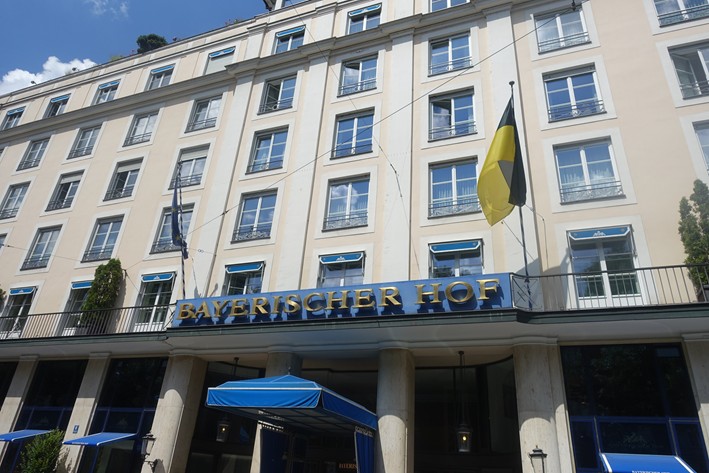


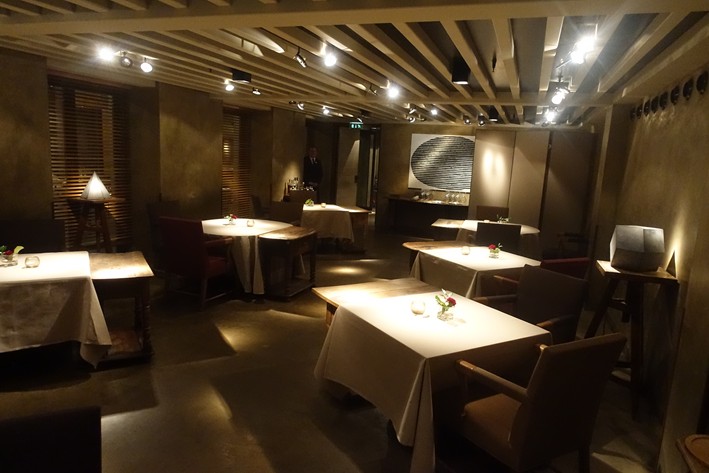

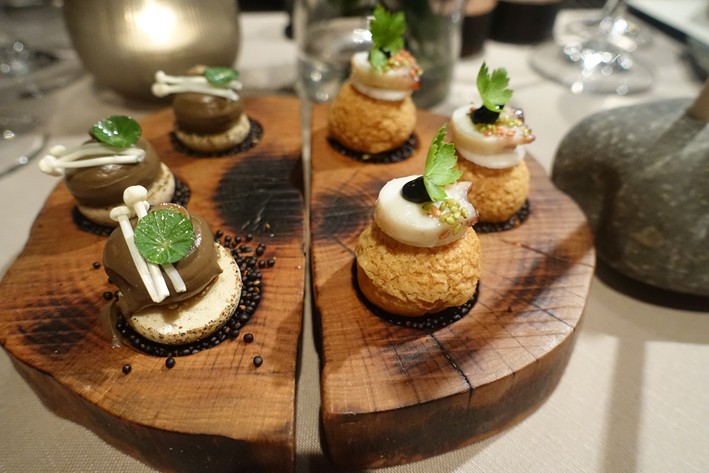
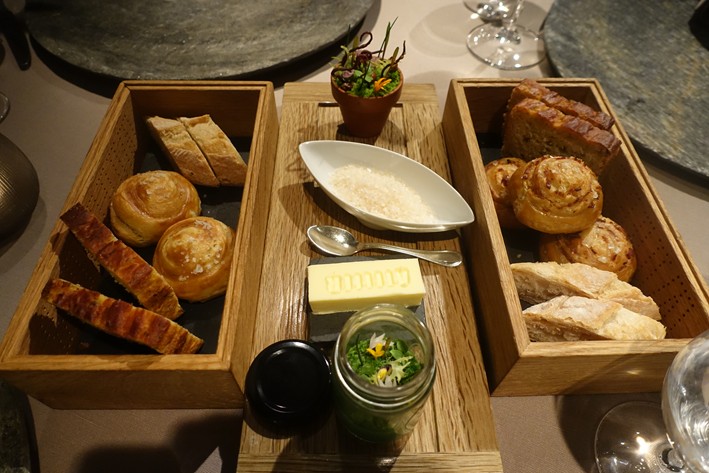
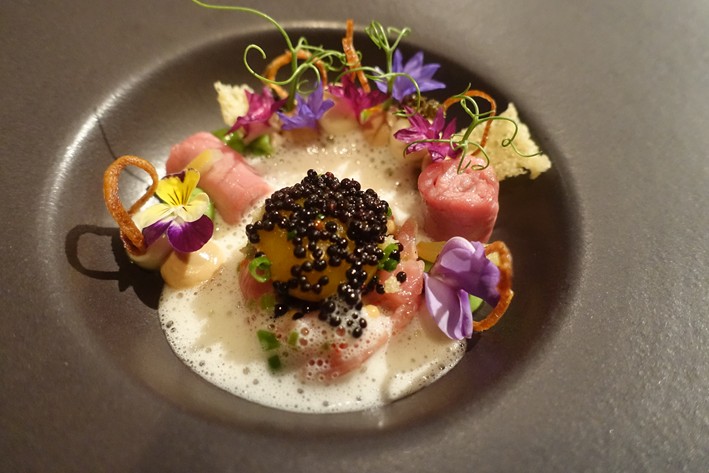

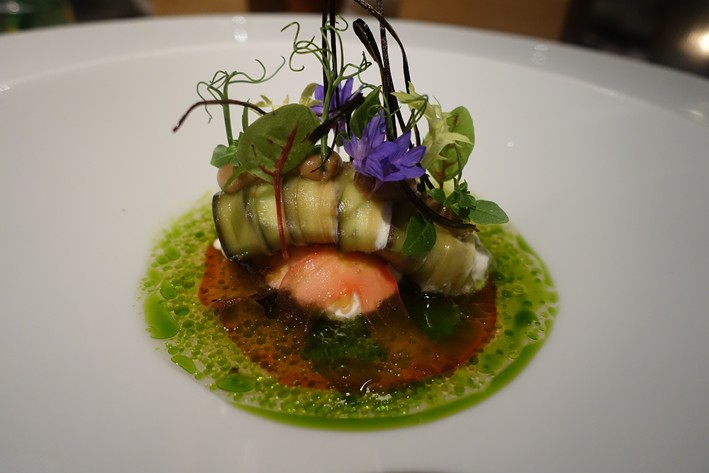
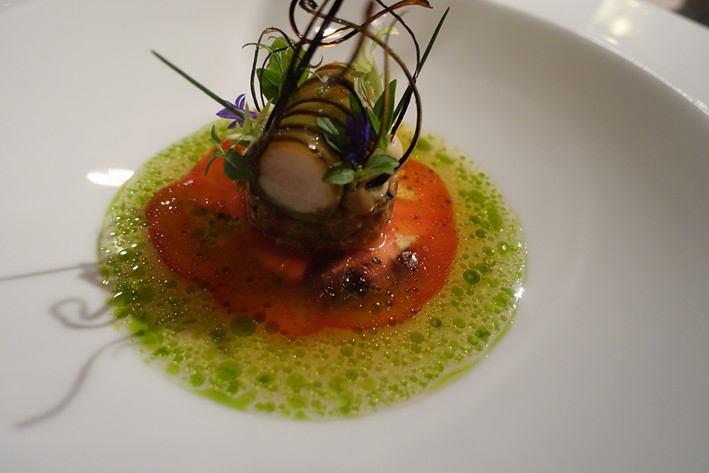


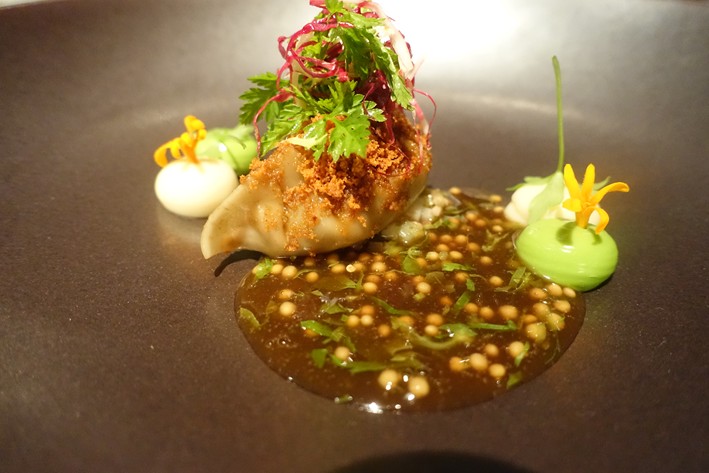
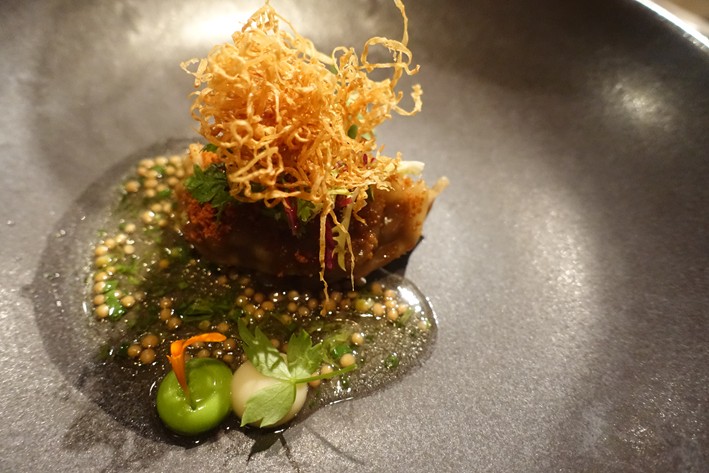
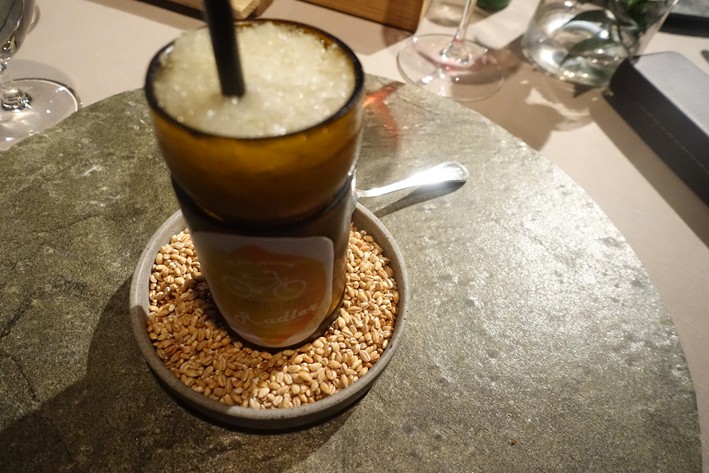
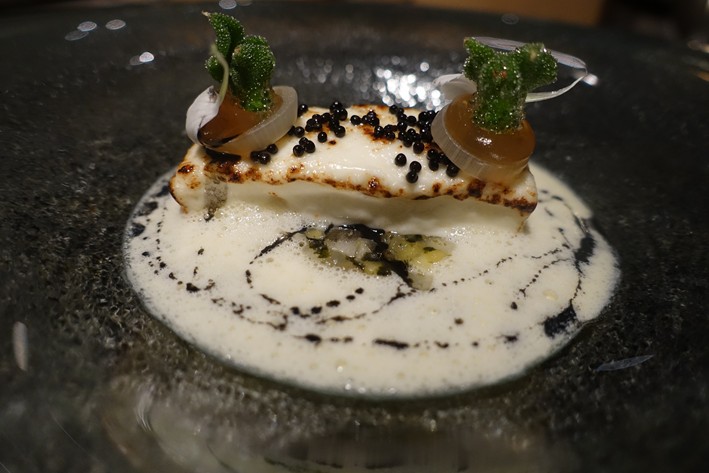
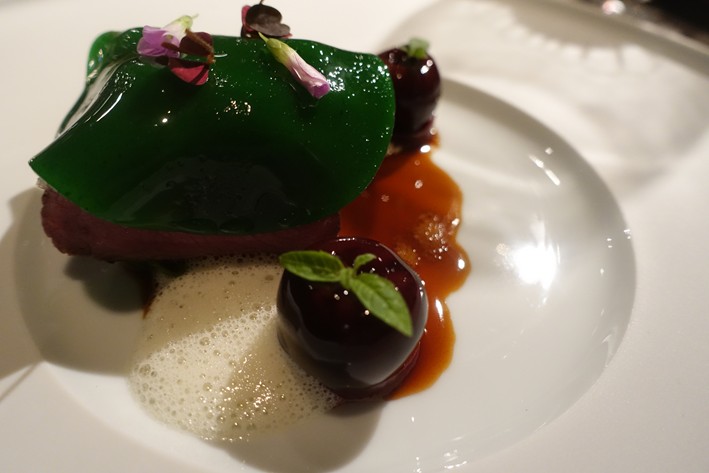



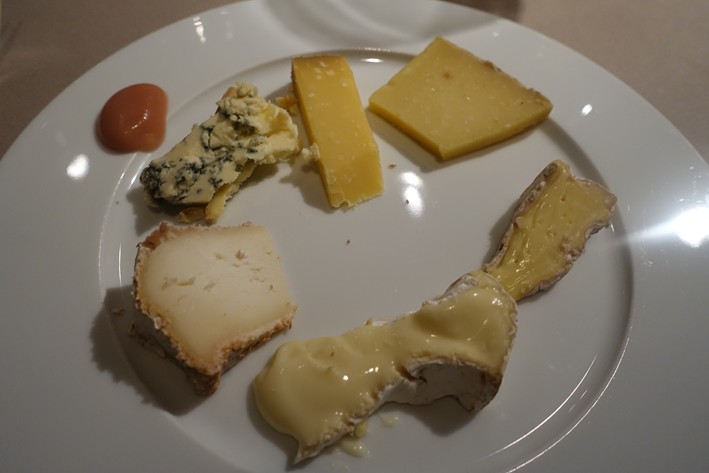
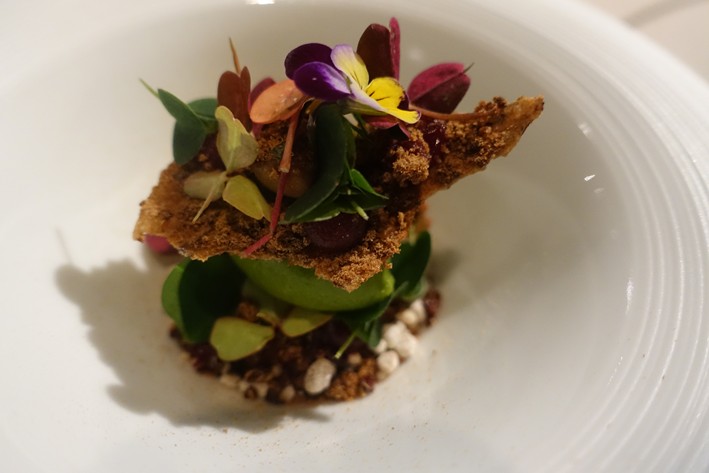
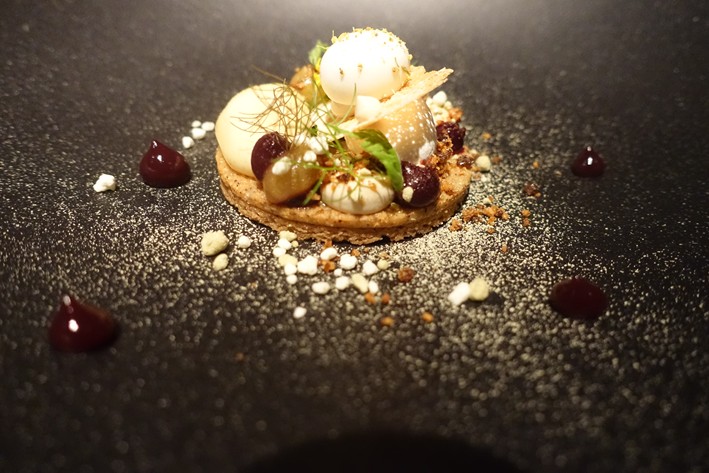
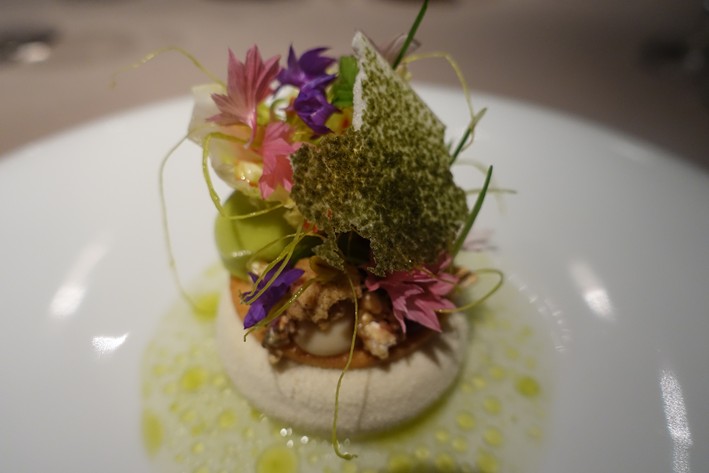
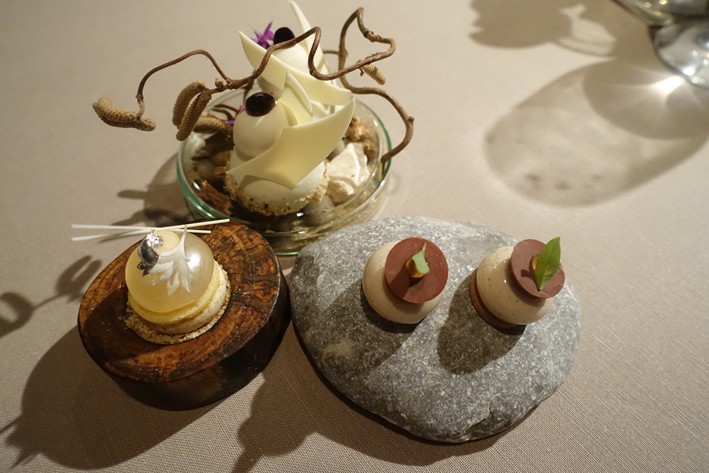

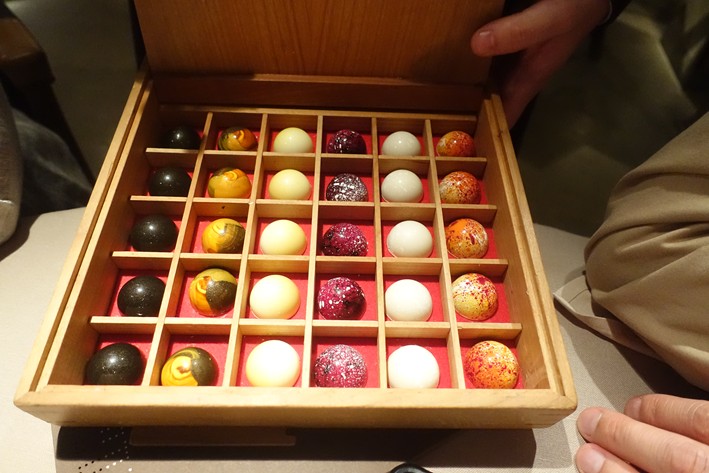


Paul Rudzinski
Outstanding meal here tonight 3 star cooking all the way service food ambience
Peter Auburn
08/12/21 The new chef is Anton Gschwendtner, who visited our table before we left. A 5 course menu is E 205 and a 6 course is E 225, the sole difference between the two being the Oyster course, The 3 canapes to start were one containing Japanese vegetables ; a caviar and cream boat and a fantastic seafood sphere containing a tomato sauce and crayfish. There were 3 types of excellent bread : sourdough, rye and a spelt with unsalted butter, beetroot butter and a pea mousse. The amuse bouche was smoked eel, hazelnuts and a crumb in a delicious lemon buttery sauce. The first course was a superb dish of Japanese hamachi ( white mackerel ) with N25 caviar, daikon , cucumber, in a smoked dashi and chive oil. The Gillardeau oyster was poached in a sake beurre blanc, ham oil and lemon, very good but less so in comparison to the other courses. The Bavarian trout was very delicately and lightly cooked with crispy calves head, sea radish, herb emulsion, caviar baubles and Savora mustard. The glazed sweetbreads were accompanied with celery, local lentils and mushrooms in a slightly too rich sherry sauce. Bavarian shoulder of roedeer, beech mushrooms , Kampot pepper, vinegar Jus together with a wonderful red shiso sauce was similarly excellent. Pre-dessert was a yoghurt sorbet with pepper spirals. As it was near Christmas an apfelstruedel snowman with honey icecream, citrus rinds and cinnamon wafers followed. Pudding was a blue mountain coffee semifreddo in the shape of a coffeebean with mango sorbet, fresh mango slices and Tahiti vanilla. There was a Bordeaux Christmas candle - a buttery banana brioche. The box of chocolate gels, as you described finished the meal : pumpkin; brown butter ; mango ; hazelnut; cinnamon and strawberry. We drank a bottle of 2017 Wittman Westhofen Aulerde Groszgewaechs Riesling at E 98. I also had a glass of Piemonte Monferrato Merlot. Service was very professional, helpful and attentive. Our meal came to £ 243 per head. I completely agree that it is 19/20 and is both very good value for money and a superb restaurant, comfortably the best in Munich.
Chris Brougham
Without doubt the best meal I have ever had in Germany having now eaten in all 3 rosette restaurants in that country. The wine pairing was superb with unusual selections.
Josef
Those shrubbery including desserts are my favourite kind... Glad you enjoyed the rest of the meal at least. By the way, I don't think classical French desserts are the think most death row prisoners crave.